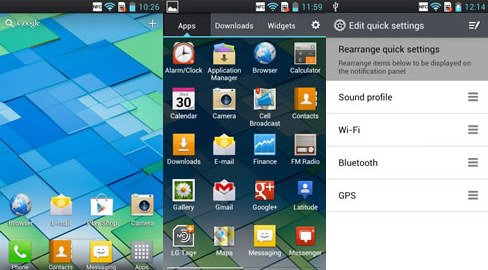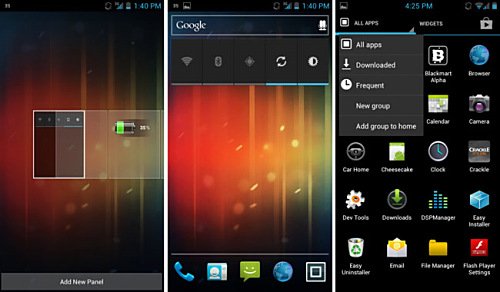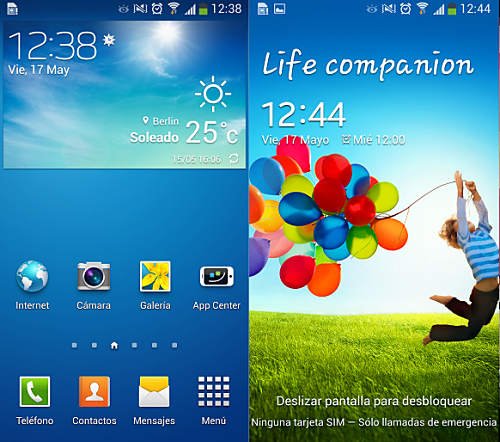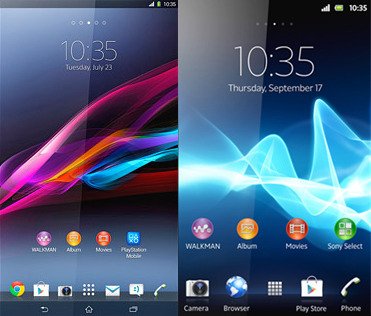One of the main advantages of Android is that it is highly customizable, a fact that the main manufacturers on the market have taken advantage of to modify its appearance and some of its characteristics, in order to differentiate itself a bit from the models of the other players in this bid for a best position in the market. LG, Motorola, Samsung and Sony, among others, have entered this game , and as a result of this trend, users generally receive software that is better adapted to the performance of the smartphone.
Although these modifications should be to the total liking of the consumer, who surely was guided by the acquisition of a particular model of the appearance or extra functionalities of their version of Android, this is not always the case, with the passage of time and use they end up generating among users apprehension because these types of modifications to the stock system do not allow to make certain changes or uninstall some applications to replace them with others.
To better understand the differences between a stock Android and a version modified by a manufacturer, in this article we have abundant information available that will be of great help. If you want to delve into this fascinating subject, we invite you to continue reading.
Contents
Android according to Google
Stock Android, also known as Pure Android , is Android without any modification, that is, as designed by Google. This does not mean that this original version cannot be used as standard on any phone, what’s more, the original version of Android, in addition to being able to do so and comply with the specifications of current devices in terms of hardware, is much lighter , both in terms of the space used for its installation as well as the use of resources such as processor and RAM memory.

Unfortunately, the only way to get a stock version of Android is to buy a smartphone like Samsung’s Galaxy S4 or one of Google’s Nexus series. However, we can count on the possibility of installing a custom ROM on our device, but to do this we must have the necessary technical knowledge not to turn the phone into a brick, and there is also no guarantee that the unit will work at its best. of its potential or without errors.
Modified Android
As we mentioned, the modified versions of Android in all cases are much heavier than the stock versions, but as a reward they provide many advantages, especially for those users who do not have much knowledge about technology, since it allows them to use all the features provided over the phone instantly and uncomplicated. From this point on, we will examine the main modified versions of Android to better understand their details and features.
LG Optimus UI
The Korean company LG is another company used to altering the version of Android that it installs on its terminals. In this case, LG incorporates an interface called Optimus UI into its phones, the main feature of which is to offer a different notification bar that includes a series of shortcuts to different options and phone settings.

Other modifications made to its version of Android by LG are related to the capabilities of the camera and support for multiple windows. An application has also been included, called “QuickMemo”, which allows us to take a screenshot and make drawings or marks on it.
Motorola
Motoblur, the version of Android modified by Motorola with special emphasis on the convergence between social networks, has been the subject for years of harsh criticism from its users and specialized media, which led the company to end its development and deployment, choosing to install a version of Android with practically no modifications on their computers, which makes it the custom ROM that is closest to the stock one.

This can be easily verified by observing the latest smartphones launched on the market by the firm, where we can see an Android with few modifications and a lot of performance, according to its owners.
Samsung TouchWiz
Known as TouchWiz , the custom version of Android for Samsung devices is one of the ROMs that has undergone the most modifications, including changes to the user interface, replacement of applications by brand developments, its own application store and many others. modifications.

However, modifications should not always be viewed with suspicion, since in this case, they also offer the user a large number of advantages such as improvements in the camera, new animation effects, widgets and the possibility of running two applications at the same time. screen time, among many other options. In this case, the Samsung ROM is one of the ones that occupies the most space on the device, since, for example, in the Samsung Galaxy S4, more than 8Gb of space is needed to store it.
Sony
Although at the beginning of its development the Android ROM customized by Sony for their smartphones differed quite a lot from the stock version, over the years this has been modified, and today it offers its functions and features in a very user-friendly interface. more tied to a pure version of Android.

In this case, and as in Samsung’s ROM, in Sony’s, some applications have also been replaced by others of their own design, the most notable being those related to multimedia, specifically the standard applications for listening to music and viewing images and videos. .
On the other hand, another of the most important changes that Sony has made in its custom ROM is the incorporation of the technology called Sony Mobile Bravia Engine, which allows images to be displayed with less noise, as well as sharper and more vivid colors.
conclusion
Despite the many advantages that each of these custom ROMs can offer the user, one point that all the modifications to the original version of Android have in common , are the complaints of users regarding the slowness with which they are released. updates for them, sometimes it can take many months before an operating system update is available on our phone. In this sense, one of the ones that takes the longest is LG, who does not seem to care about the gale of complaints from its users.